Welcome to our article on the Cameroon flag! In this informative piece, we will delve into the captivating world of the Cameroon flag, exploring its vibrant colors, symbolic meanings, and rich historical background. Join us as we uncover the fascinating story behind this esteemed national emblem, which holds great significance for the people of Cameroon.
With its distinctive design and powerful symbolism, the Cameroon flag represents the country’s unique identity and unity. The colors and symbols embedded within the flag reflect the rich cultural heritage and historical struggles of this diverse African nation.
Key Takeaways:
- Discover the meaning behind the colors on the Cameroon flag
- Explore the symbols and emblems depicted on the flag
- Learn about the historical evolution of the Cameroon flag.
- Understand the cultural significance of the flag to the people of Cameroon.
- Uncover the international recognition and importance of the Cameroon flag.
The Design of the Cameroon Flag
When examining the design of the Cameroon flag, one can appreciate its simplicity and meaningful elements. Let’s explore the various flag elements that contribute to the distinctive design of this national symbol.
The Cameroon flag features three equally sized vertical stripes of green, red, and yellow, from left to right. These colors hold significant symbolism and represent the core values and aspirations of the Cameroonian people.
The vibrant green stripe on the left represents the lush vegetation and agricultural richness of the country. It symbolizes hope, prosperity, and fertility, reflecting the nation’s commitment to sustainable growth and development.
Next, the red stripe in the middle signifies unity, bravery, and the sacrifices made during Cameroon’s struggle for independence. It is a reminder of the collective strength and resilience of the Cameroonian people in overcoming challenges and forging a united nation.
The yellow stripe on the right represents the abundant sunlight that blesses the land of Cameroon. It represents justice, the bright future, and the country’s determination to build a prosperous and equitable society.
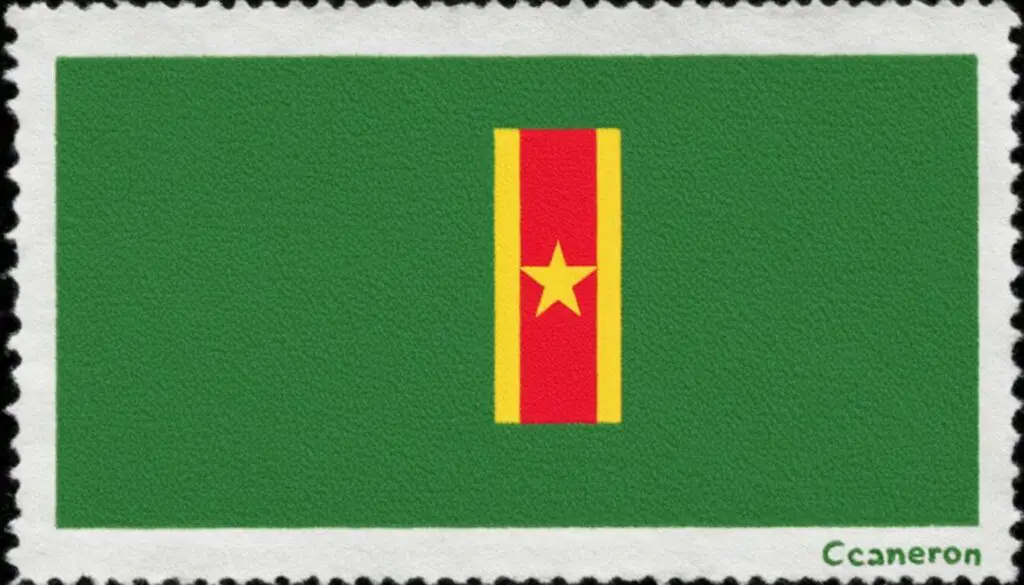
These vibrant colors on the Cameroon flag come together to create a visually striking and meaningful design. The three vertical stripes are a powerful representation of the nation’s history, identity, and aspirations, embodying the essence of Cameroon’s rich cultural heritage.
Now that we have explored the design elements of the Cameroon flag, let’s delve deeper into the significance and meaning behind the colors on the flag in the next section.
Colors on the Cameroon Flag
The Cameroon flag is composed of three vertical stripes of different colors. Each color holds significance and carries symbolic meaning that reflects the country’s history and culture.
The first stripe, positioned at the hoist side of the flag, is green. This vibrant color represents the lush vegetation and agricultural wealth of Cameroon. It symbolizes hope, growth, and the country’s commitment to sustainable development.
The middle stripe, in bright yellow, embodies the sun’s warmth and light. It symbolizes Cameroon’s optimism, vitality, and the prosperity of its people.
The final stripe, in vivid red, represents the bravery and strength of the Cameroonian people. It signifies their determination, resilience, and the sacrifices made in the country’s fight for independence and freedom.
Together, these three colors on the Cameroon flag reflect the nation’s unity, diversity, and aspirations. They serve as a powerful visual representation of Cameroon’s rich cultural heritage and the ideals that its people hold dear.
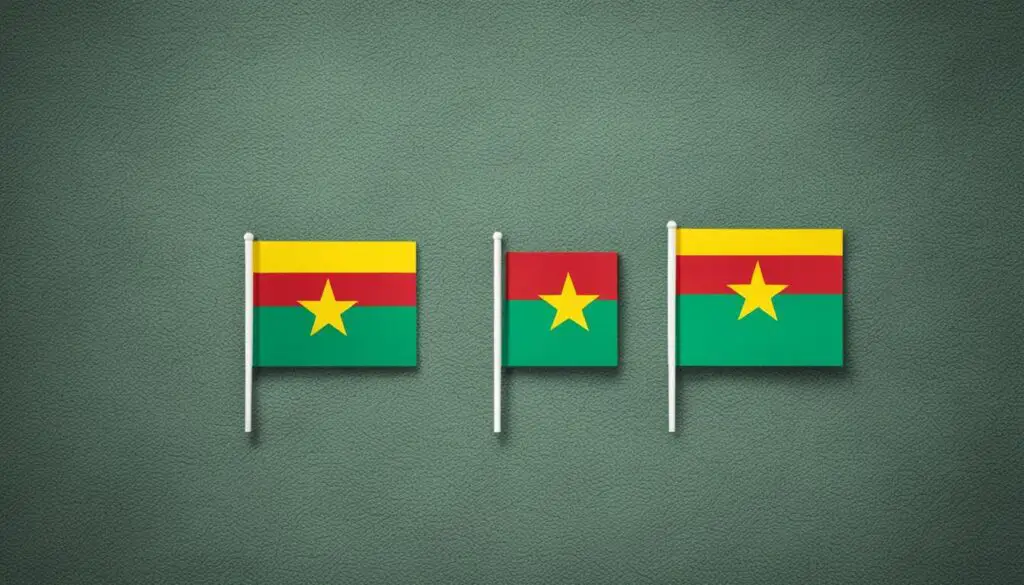
Significance and Meaning
The colors on the Cameroon flag hold deep significance and are a source of national pride. They are a constant reminder of the country’s past struggles, present accomplishments, and future aspirations. The symbolism behind each color serves as a unifying force, fostering a sense of identity and belonging among the Cameroonian people.
Green represents the country’s abundant natural resources and its commitment to sustainable development. It signals Cameroon’s determination to preserve its environment and achieve a harmonious balance between economic growth and environmental conservation.
Yellow symbolizes hope, optimism, and the bright future that Cameroon envisions for itself. It reflects the country’s resilience and the unwavering spirit of its people, who strive for progress and prosperity.
Red embodies the bravery, courage, and sacrifice of the Cameroonian people. It is a testament to their indomitable spirit and their fight for freedom, justice, and equality. Red also represents the bloodshed and sacrifices made by the nation’s heroes in the pursuit of independence.
The combination of these colors creates a visually striking flag that represents the harmonious coexistence of Cameroon’s diverse ethnic groups, languages, and cultures. It is a powerful symbol of unity and national pride, reminding the Cameroonian people of their shared history and collective journey towards a brighter future.
Symbols and Emblems on the Cameroon Flag
When examining the Cameroon flag, it quickly becomes apparent that it is filled with powerful symbols and emblems that hold deep meaning to its people. Each element on the flag tells a story and represents the values and aspirations of this West African nation.
The first symbol that catches the eye is the central yellow star, which stands as a representation of unity and hope. It signifies the desire for a prosperous future, where the diverse people of Cameroon can come together as one.
Surrounding the star are two green stripes that symbolize the nation’s lush vegetation and agricultural abundance. These stripes not only pay homage to the country’s rich natural resources but also embody the spirit of growth, vitality, and fertility.
Flanking the green stripes are two red bars, showcasing the courage and resilience of the Cameroonian people. The red color also represents the struggle for independence and freedom from colonial rule, encapsulating the country’s historic journey towards sovereignty.
At the top and bottom of the flag, we see the pan-African color scheme of green, red, and yellow, which is a nod to the collective aspirations of all African nations. This color combination reinforces Cameroon’s commitment to Pan-Africanism and its role within the continent.
The symbols and emblems on the Cameroon flag serve as a visual representation of the nation’s history, values, and aspirations. They unite the people, remind them of their shared identity, and inspire a sense of national pride. The flag is not merely a piece of cloth; it is a powerful symbol that reflects the hopes and dreams of an entire nation.
Historical Evolution of the Cameroon Flag
Over the years, the Cameroon flag has gone through several changes, reflecting significant events and influences that shaped its design. Understanding the evolution of the flag allows us to appreciate its symbolism and historical significance.
The initial design of the Cameroon flag featured three vertical stripes of green, red, and yellow, representing the country’s lush vegetation, unity, and sunshine, respectively. This design was adopted in 1957 when Cameroon gained self-government.
However, with the country’s unification, the flag underwent modifications in 1961. The newly united Cameroon incorporated a gold star in the middle of the red stripe, symbolizing the aspirations of the people to build a bright future together.
Another significant change occurred in 1975 when Cameroon transitioned to a unitary state. The flag was modified to have two horizontal bands of green and red, with a yellow five-pointed star at the hoist side. This change represented the fusion of the territories into a united nation.
The most recent modification of the flag happened in 1984 when the country adopted a new constitution. The design was simplified to a vertical tricolor of green, red, and yellow, with the national coat of arms at the center. This adaptation showcased Cameroon’s commitment to national unity and progress.
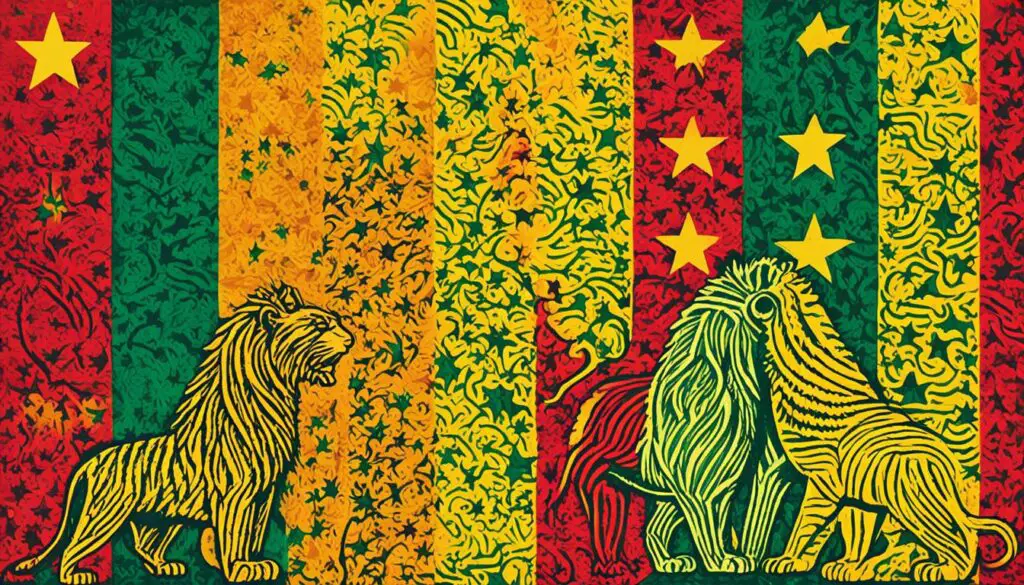
The evolution of the Cameroon flag tells a compelling story of the country’s journey and transformation. It reflects the spirit of unity, resilience, and progress that has shaped Cameroon’s history. By understanding the changes over time, we can better appreciate the rich symbolism embedded in the flag, connecting us to Cameroon’s past and inspiring us for the future.
Cultural Significance of the Cameroon Flag
Delving into the cultural aspects, this section will discuss how the Cameroon flag holds cultural significance among the people, representing their identity, pride, and unity.
The Cameroon flag is more than just a piece of cloth. It embodies the values, traditions, and history of the Cameroonian people. The vibrant colors and symbols on the flag are deeply rooted in the country’s cultural heritage, creating a strong sense of belonging and national pride.
The impact of the Cameroon flag extends beyond national boundaries. It serves as a visual representation of the country’s rich diversity, captivating the attention and curiosity of people from different cultures around the world. The flag has become a symbol of solidarity, promoting understanding and fostering connections between Cameroon and other nations.
Through its colors and symbols, the Cameroon flag reflects the country’s unique fusion of cultures, religions, and ethnicities. The green, red, and yellow colors represent the lush vegetation, the sacrifices made for freedom, and the sun respectively. These colors, combined with the star and crescent symbol, showcase the country’s commitment to unity, diversity, and prosperity.
The cultural significance of the Cameroon flag is further evident in national celebrations and events where it takes center stage. During Independence Day and other significant holidays, the flag is proudly displayed, serving as a reminder of the country’s past struggles and triumphs. It serves as a unifying force, bringing people together to celebrate their shared heritage and values.
The Cameroon flag has also become a source of inspiration for various creative expressions, including art, fashion, and music. Artists and designers often incorporate the colors and symbols of the flag into their works, paying homage to their cultural roots and showcasing their national pride.
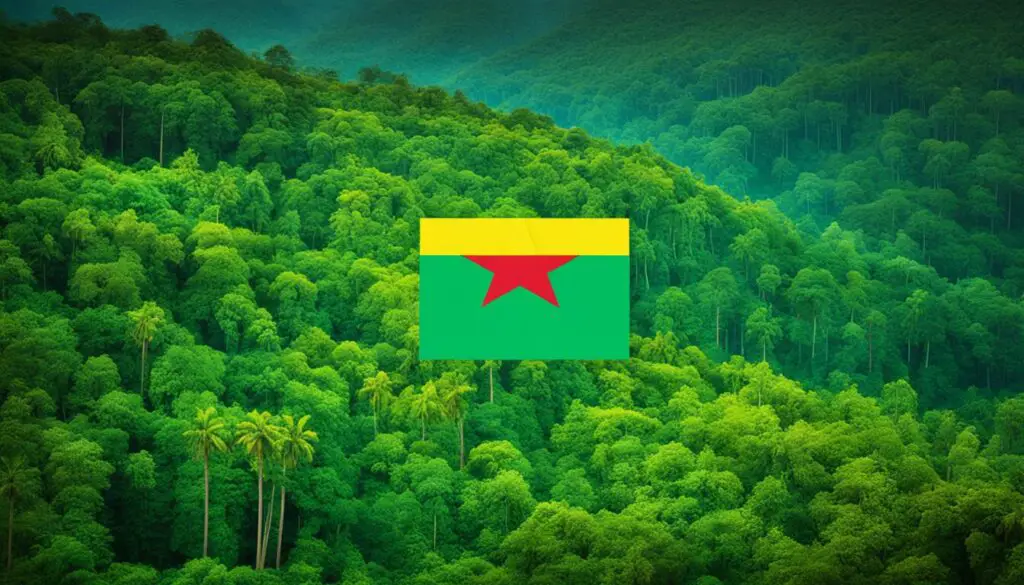
Through its cultural significance and impact, the Cameroon flag continues to play a vital role in shaping the collective identity of the Cameroonian people. It speaks to their history, diversity, and aspirations, fostering unity and resilience in the face of challenges. The flag symbolizes the enduring spirit of Cameroon, serving as a powerful reminder of the country’s cultural heritage and the pride of its people.
National Holidays and Celebrations Involving the Cameroon Flag
Cameroon is a vibrant and diverse country with a rich cultural heritage. The Cameroon flag plays a central role in various national holidays and celebrations, symbolizing unity, pride, and the spirit of the Cameroonian people.
Independence Day
One of the most significant national holidays in Cameroon is Independence Day, celebrated on January 1st. This day marks the country’s independence from French and British colonial rule in 1960. The Cameroon flag takes center stage during Independence Day parades, with its vivid colors waving proudly in the air.
National Unity Day
Observed on May 20th, National Unity Day commemorates the reunification of the British-administered Southern Cameroons and the French-administered Trust Territory of Cameroon in 1972. This holiday showcases the diversity and unity of the Cameroonian people, with the flag serving as a powerful symbol of national cohesion.
Réunification Day
On October 1st, Cameroon celebrates Réunification Day, which marks the official reunification of East Cameroon and West Cameroon in 1961. This event played a crucial role in shaping the country’s political landscape, and the Cameroon flag is prominently displayed during the festivities, highlighting the nation’s history and progress.
Flag Day
Every October 27th, Cameroonians come together to celebrate Flag Day. This holiday recognizes the importance of the national flag and its representation of the country’s identity. It is an opportunity for citizens to honor the values and principles embodied by the Cameroon flag in various cultural events and ceremonies.
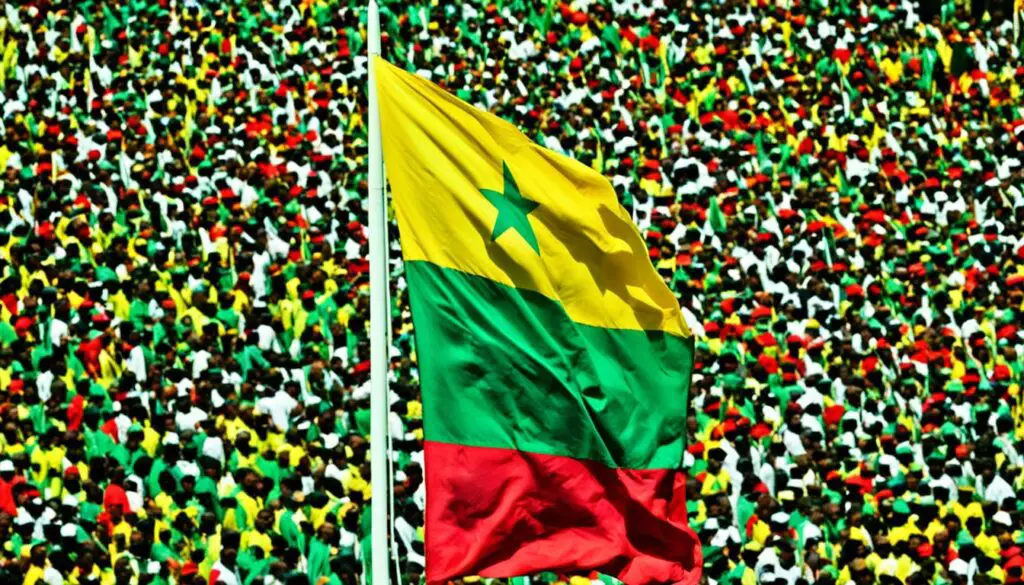
These national holidays and celebrations provide a platform for the Cameroon flag to shine, evoking a sense of patriotism and unity among the Cameroonian people. Whether it’s during parades, cultural performances, or community gatherings, the flag stands tall, representing the collective spirit and aspirations of this diverse nation.
International Recognition and Importance of the Cameroon Flag
The Cameroon flag holds international recognition and paramount importance in the global landscape. Its distinctive design and symbolic representation have made it an emblem of national identity and unity for the Cameroonian people.
Internationally, the Cameroon flag finds prominence and respect in various arenas. It proudly flies at the headquarters of the United Nations, signifying Cameroon’s diplomatic engagement and commitment to global peace and cooperation.
Moreover, the flag of Cameroon is a familiar sight during international sporting events such as the Olympic Games and the FIFA World Cup, where it represents the nation’s athletic prowess and the passion of its people.
Cameroon’s flag has become synonymous with the country’s rich cultural heritage and its willingness to engage with the international community. It is a beacon of hope, symbolizing unity, diversity, and progress.
Overall, the international recognition and importance of the Cameroon flag not only reflect the nation’s history and values but also highlight its active participation on the global stage.
Conclusion
In conclusion, the Cameroon flag is a powerful symbol that represents the country’s rich history, culture, and national identity. Through its design, colors, and symbols, the flag showcases the unity and resilience of the Cameroonian people.
The combination of the flag’s green, red, and yellow colors holds deep significance. Green symbolizes hope and the lush vegetation of Cameroon, while red represents the sacrifices made for independence and the unity of the nation. Yellow stands for the generous sunshine that graces the land. These colors work together to create a vibrant and meaningful flag.
Furthermore, the symbols and emblems on the flag, such as the star, the shield, and the scales of justice, further highlight the values and aspirations of the Cameroonian society. They signify the country’s commitment to peace, justice, and prosperity.
Overall, the Cameroon flag stands as a testament to the resilience, unity, and cultural heritage of the Cameroonian people. It continues to be a source of pride and serves as a reminder of the nation’s journey towards independence and progress.
FAQ
What are the colors of the Cameroon flag?
The colors of the Cameroon flag are green, red, and yellow.
What does each color on the Cameroon flag represent?
Green represents hope and fertility, red symbolizes unity and patriotism, and yellow represents sunshine and the savannahs of northern Cameroon.
What are the symbols on the Cameroon flag?
The Cameroon flag features a gold star in the center, which represents the unity of the country’s diverse ethnic groups. The colors and patterns on the flag also hold symbolic meaning.
How has the Cameroon flag evolved over time?
The Cameroon flag has undergone several changes since its adoption in 1957. It was initially a horizontal tricolor of green, yellow, and red, but it was modified in 1975 and again in 1984 to its current design.
What is the cultural significance of the Cameroon flag?
The Cameroon flag holds great cultural significance as it represents the country’s identity, pride, and unity. It serves as a symbol of the people’s shared history, diversity, and aspirations.
Are there any national holidays in Cameroon that involve the flag?
Yes, the Cameroon flag is prominently displayed during national holidays and celebrations such as Independence Day on May 20th and National Unity Day on May 19th. It is also seen during various cultural events and sports competitions.
How is the Cameroon flag recognized internationally?
The Cameroon flag is recognized internationally and holds importance as a symbol of the country’s independence, cultural heritage, and national pride. It is raised in international events, diplomatic missions, and organizations where Cameroon is represented.